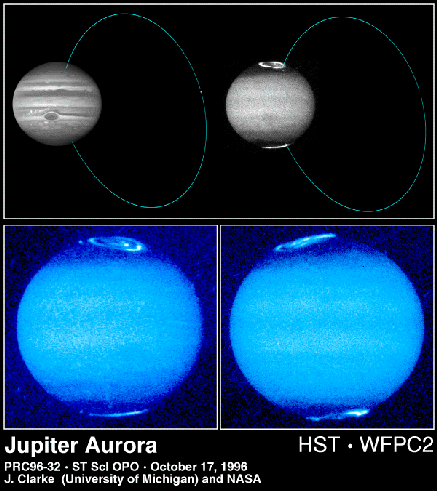
Excerpt from the Encyclopedia Britannica without permission.
Aurora are a luminous phenomenon of the upper atmosphere that occurs primarily in high latitudes of both hemispheres; auroras in the Northern Hemisphere are called aurora borealis, or northern lights; in the Southern Hemisphere, aurora australis, or southern lights.
Auroras are caused by the interaction of energetic particles (electrons and protons) from outside the atmosphere with atoms of the upper atmosphere. Such interaction occurs in zones surrounding the Earth's magnetic poles. During periods of intense solar activity, auroras occasionally extend to the middle latitudes; for example, the aurora borealis has been seen as far south as 40 latitude in the United States.
Auroras take many forms, including luminous curtains, arcs, bands, and patches. The uniform arc is the most stable form of aurora, sometimes persisting for hours without noticeable variation. However, in a great display other forms appear, commonly undergoing dramatic variation. The lower edges of the arcs and folds are usually much more sharply defined than the upper parts. Greenish rays may cover most of the sky polewards of the magnetic zenith, ending in an arc that is usually folded and sometimes edged with a lower red border that may ripple like drapery. The display ends with a poleward retreat of the auroral forms, the rays gradually degenerating into diffuse areas of white light.
The mechanisms that produce auroral displays are not completely understood. It is known, however, that charged particles arriving in the vicinity of Earth as part of the solar wind are captured by the Earth's magnetic field and conducted downward toward the magnetic poles. They collide with oxygen and nitrogen atoms, knocking away electrons to leave ions in excited states. These ions emit radiation at various wavelengths, creating the characteristic colours (red or greenish blue) of the aurora.

Excerpt from the Encyclopedia Britannica without permission.